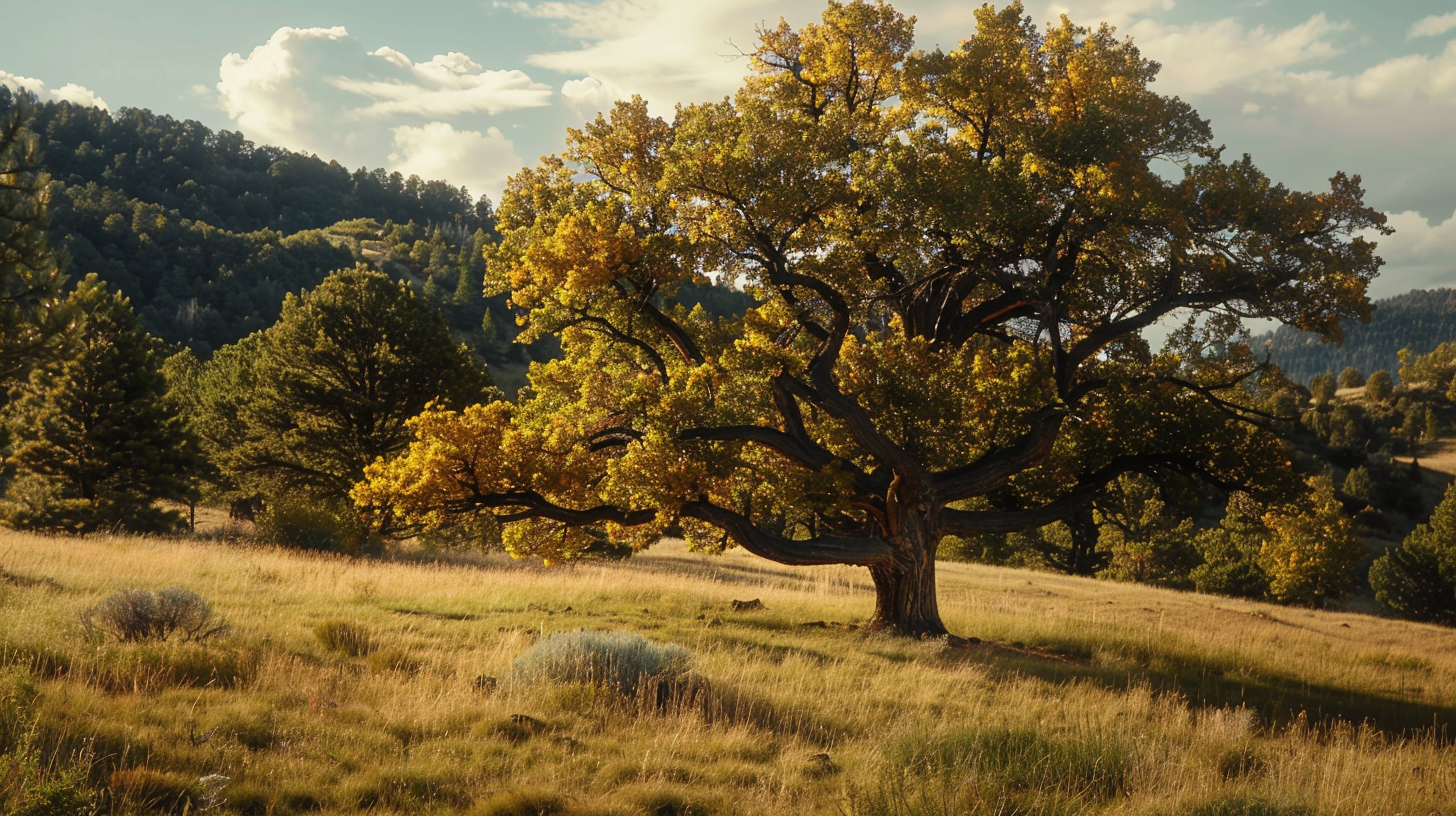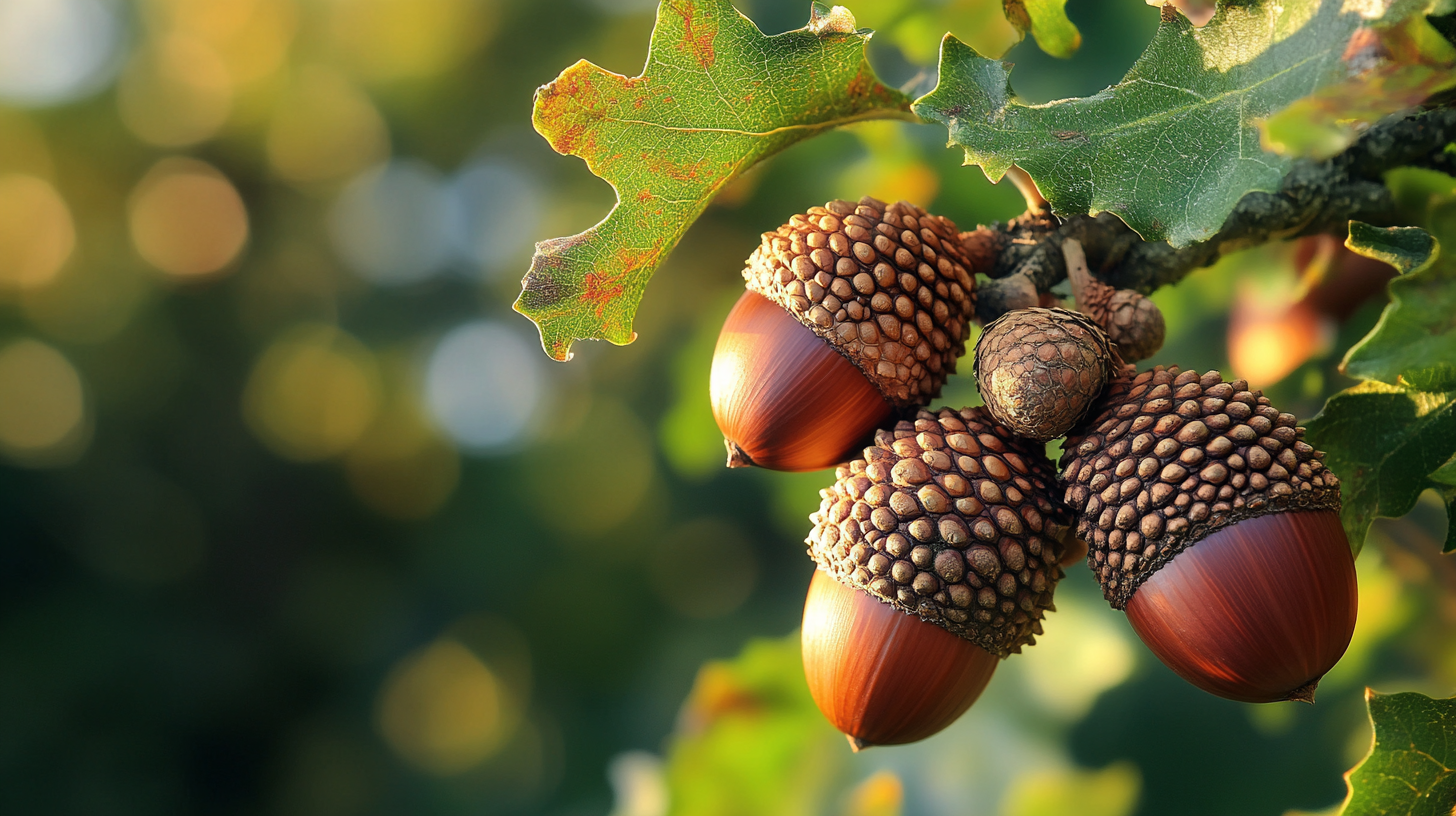Table of Contents
Oak trees are renowned for their strength, longevity, and ecological importance. But can these majestic trees thrive in the unique climate and soil conditions of Colorado? This comprehensive guide explores the types of oak trees that can grow in Colorado, their specific requirements, and the benefits they bring to the environment.
Understanding Oak Trees
What Are Oak Trees?
Oak trees, belonging to the genus Quercus, are known for their sturdy trunks, lobed leaves, and distinctive acorns. With around 500 species worldwide, oaks are divided into two main groups: white oaks and red oaks. White oaks, such as the Bur Oak and Swamp White Oak, have rounded leaves and lighter bark, while red oaks, like the Northern Red Oak, feature pointed leaves and darker bark. Oaks play a crucial role in ecosystems, providing food and habitat for wildlife and contributing to soil health and air quality.
Oak Trees in Colorado
Types of Oak Trees That Can Grow in Colorado
Gambel Oak (Quercus gambelii)
Gambel Oak, also known as scrub oak, is the most common oak species in Colorado. Found along the foothills of the Front Range and throughout western Colorado, this oak is highly adaptable to various soil types, including heavy clays. It can grow as a shrub or a small tree, depending on soil depth and moisture availability. Gambel Oak is drought-tolerant and resilient to wildfires, making it a robust choice for Colorado’s arid climate.
Bur Oak (Quercus macrocarpa)
Bur Oak is another excellent choice for Colorado landscapes. Known for its ruggedness, this oak can tolerate a wide range of soil types and air pollutants. It features dark green, glossy leaves and a distinctive mossy fringe around its acorns. Bur Oak can grow up to 70 feet tall and is well-suited for urban environments due to its tolerance of pollution and strong wind resistance.
Swamp White Oak (Quercus bicolor)
Swamp White Oak thrives in moist, well-draining soils but can also tolerate clay soils. This oak features two-toned leaves with a shiny green top and a velvety white underside. It provides excellent shade and has a broad, oval crown. Swamp White Oak is a hardy tree that can live for hundreds of years, making it a valuable addition to any landscape.
Heritage Oak (Quercus x macdanielii ‘Clemons’)
Heritage Oak is a hybrid of English Oak and Bur Oak, combining the best traits of both species. It is highly adaptable to various soil types and urban conditions. This oak can grow up to 60 feet tall and has a broad, pyramidal form. Its deep green leaves are resistant to mildew and wind damage, making it a low-maintenance option for Colorado gardens.
Climate and Soil Requirements
Climate Considerations for Growing Oak Trees in Colorado
Colorado’s climate varies significantly across the state, with hot summers, cold winters, and low humidity. Oak trees in Colorado must be able to withstand these temperature extremes and occasional drought conditions. Gambel Oak, for instance, is well-adapted to the arid and semi-arid zones of Colorado, thriving in full sun and rocky, alkaline soils.
Soil Requirements for Oak Trees in Colorado
Oak trees generally prefer well-draining soils with a slightly acidic to neutral pH. However, some species, like Bur Oak and Swamp White Oak, can tolerate clay soils. Improving soil conditions with organic matter can enhance drainage and nutrient availability, promoting healthier growth. Regular soil testing can help determine the specific amendments needed for optimal tree health.
Planting and Care
How to Plant Oak Trees in Colorado
- Best Time to Plant: Early spring or fall, when temperatures are mild.
- Planting Steps:
- Choose a sunny location with well-draining soil.
- Dig a hole twice as wide and as deep as the root ball.
- Place the tree in the hole, ensuring the root collar is level with the ground.
- Backfill with soil, gently tamping down to remove air pockets.
- Water thoroughly and apply mulch around the base to retain moisture.
Caring for Oak Trees in Colorado
- Watering: Young oak trees need regular watering to establish roots. Mature trees are more drought-tolerant but benefit from occasional deep watering during dry spells.
- Fertilization: Apply a balanced fertilizer in early spring to support growth. Avoid over-fertilizing, as this can lead to weak, spindly growth.
- Pruning: Prune in late winter to remove dead or diseased branches and shape the tree. Avoid pruning during the growing season to prevent disease spread.
- Pest and Disease Management: Oaks are generally pest-resistant, but watch for signs of oak wilt, aphids, and caterpillars. Use integrated pest management strategies to control infestations.
Benefits of Oak Trees
Environmental Benefits of Oak Trees
- Carbon Sequestration: Oaks capture more carbon than any other tree genus, helping mitigate climate change.
- Soil Stabilization: Their extensive root systems prevent soil erosion and improve soil structure.
- Wildlife Habitat: Oaks provide food and shelter for numerous species, including birds, mammals, and insects.
Aesthetic and Practical Benefits of Oak Trees
- Shade and Cooling: Oak trees provide significant shade, reducing the heat island effect in urban areas.
- Longevity: Oaks can live for hundreds of years, offering long-term benefits and historical significance.
- Landscaping: Their majestic appearance and seasonal color changes enhance the beauty of any landscape.
Challenges and Solutions
Common Challenges in Growing Oak Trees in Colorado
- Drought and Water Scarcity: Select drought-tolerant species like Gambel Oak and Bur Oak.
- Soil Compaction and Poor Drainage: Improve soil with organic matter and ensure proper planting techniques.
- Pests and Diseases: Monitor trees regularly and use appropriate treatments to manage issues.
Solutions and Best Practices
- Drought-Tolerant Species: Choose species adapted to Colorado’s climate.
- Soil Improvement: Regularly add compost and mulch to enhance soil quality.
- Integrated Pest Management: Use natural predators and organic treatments to control pests.

Conclusion
Final Thoughts on Growing Oak Trees in Colorado
Oak trees can indeed grow in Colorado, provided you choose the right species and follow proper planting and care practices. These trees offer numerous environmental and aesthetic benefits, making them a valuable addition to any landscape. By planting and nurturing oak trees, you contribute to local ecosystems and create a lasting legacy for future generations.
Additional Resources
Further Reading and Resources
- Local Nurseries and Gardening Centers: Visit local nurseries for expert advice and quality oak tree saplings.
- Recommended Books and Articles: “Gambel Oak Ecology and Management in the Southern Rockies” by Merrill R. Kaufmann et al.
- Contact Information for Local Arborists: Reach out to certified arborists for professional tree care services.
FAQs
Frequently Asked Questions About Growing Oak Trees in Colorado
- Can oak trees survive Colorado winters? Yes, species like Gambel Oak and Bur Oak are well-adapted to Colorado’s cold winters.
- How fast do oak trees grow in Colorado? Growth rates vary by species, with some oaks growing slowly while others, like Northern Red Oak, grow more quickly.
- What are the best oak trees for urban areas in Colorado? Heritage Oak and Bur Oak are excellent choices for urban environments due to their pollution tolerance and robust growth.
- How do I protect my oak trees from pests and diseases? Regular monitoring, proper pruning, and integrated pest management strategies can help keep your oak trees healthy.
By following this guide, you can successfully grow and care for oak trees in Colorado, enhancing your landscape and supporting local ecosystems.




